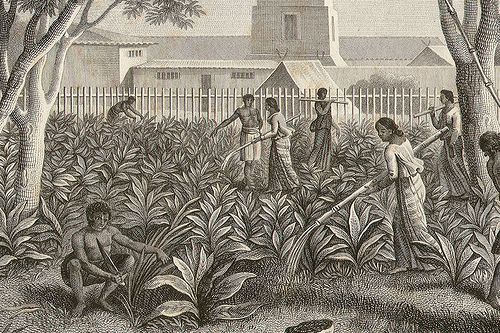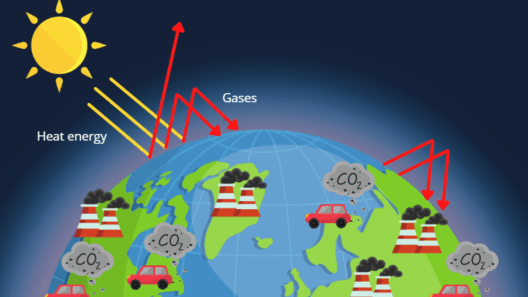The harpy eagle, a majestic avian predator, reigns supreme in the canopy of tropical rainforests. Its remarkable flight capabilities not only captivate the hearts of ornithology enthusiasts but also serve as a profound testament to the resilience of nature amid escalating environmental challenges. As the effects of global warming extend their insidious reach into these vibrant ecosystems, the survival of the harpy eagle and its habitat becomes inextricably linked to the broader narrative of climate change and biodiversity conservation.
Characterized by its striking appearance, the harpy eagle boasts a wingspan that can exceed seven feet and is adorned with a strikingly bold plumage of dark feathers and a distinctive crown of feathers atop its head. This iconic raptor epitomizes the apex predator of the rainforest, specializing in hunting arboreal prey such as monkeys and sloths, demonstrating not only strength but also keen acumen in navigating through the intricate and towering vegetation of its habitat.
Observing a harpy eagle in flight is a mesmerizing experience. Its soaring wings effortlessly slice through the humid air, as it glides between the dense layers of the forest and garners the attention of all who witness its grandeur. However, beneath this awe-inspiring spectacle lies a pressing concern. The world’s rainforests, the essential lungs of our planet, are under siege from global warming and deforestation. These environmental stressors are radically transforming the habitats that harpy eagles rely on for sustenance and breeding.
Climate change induces alterations in weather patterns, which can lead to erratic rainfall and temperature fluctuations in tropical regions. Such changes can drastically affect the food sources and nesting habitats of the harpy eagle. Tropical rainforests are intricate ecosystems where myriad species, including the harpy eagle, interact symbiotically. The disruption of this delicate balance can precipitate a cascading effect, leading to declines in species populations and habitat degradation.
Furthermore, habitat destruction, driven primarily by logging and agricultural expansion, exacerbates the challenges faced by harpy eagles. As trees are felled to make way for crop cultivation or urbanization, the living space for these birds diminishes dramatically. The canopy, which serves as both a hunting ground and a sanctuary, becomes fragmented, isolating populations and impairing genetic diversity. The survival of the species hinges on the ability to adapt and navigate through this increasingly inhospitable landscape.
Interestingly, the harpy eagle’s impressive hunting prowess and flight capabilities are not merely evolutionary traits; they are critical adaptations that enhance its survival potential amidst environmental challenges. The eagle possesses extraordinary vision that allows it to spot potential prey from hundreds of feet above the forest floor. This acute predatory instinct is vital, especially as the availability of prey becomes uncertain due to climate-induced shifts in wildlife distributions and population dynamics.
Moreover, the breeding patterns and nesting behaviors of harpy eagles are also subject to the consequences of global warming. Ideal nesting sites within the tallest trees are increasingly compromised as mature forests are reduced to mere remnants of their former selves. Climate change not only affects the availability of these sites but may also alter the timing of reproduction, impacting the survival rates of chicks who rely on stable environmental conditions during their early life stages.
A perplexing aspect of the harpy eagle’s predicament is the paradox of its stunning resilience juxtaposed against the backdrop of such destructive change. Birds of prey, including harpy eagles, often adapt ingeniously to their surroundings, yet their survival is increasingly tenuous as their habitats disappear. Conservation efforts aimed at preserving these magnificent birds must be keenly aware of the multifaceted issues presented by climate change.
Restoration of rainforest habitats is paramount to safeguarding the future of the harpy eagle. Reforestation efforts not only provide essential nesting sites and hunting grounds but also contribute to stabilizing carbon levels in the atmosphere. By fostering biodiversity, these initiatives can mitigate the impacts of climate change and create more resilient ecosystems. Collaborations among governments, NGOs, and local communities are crucial in creating strategies for protecting both the harpy eagle and its rainforest habitats. It is imperative to recognize the interdependence of species and habitats and to undertake actions that reflect this interconnectedness.
In conclusion, the harpy eagle, with its awe-inspiring flight and intricate behaviors, exemplifies the battle for survival in the face of looming threats posed by global warming. Observing these magnificent creatures in their native habitat invokes a sense of wonder, yet it also serves as a poignant reminder of the urgent environmental challenges that we collectively face. By understanding the essential role that rainforests play in sustaining the planet’s biodiversity and actively participating in conservation efforts, we can foster a future where harpy eagles and countless other species can thrive amidst a rapidly changing world.







